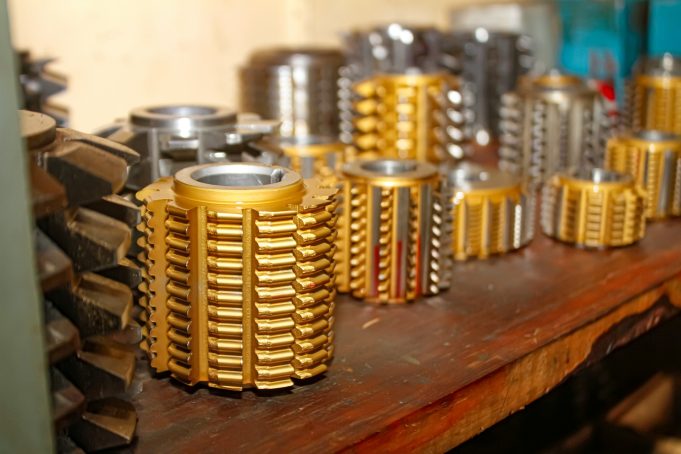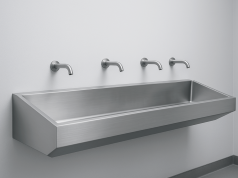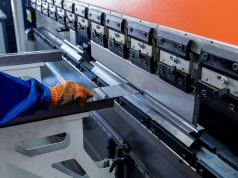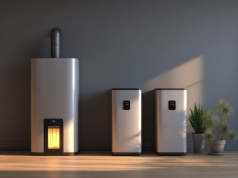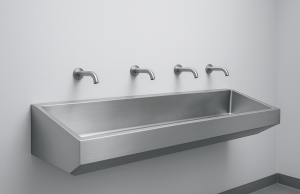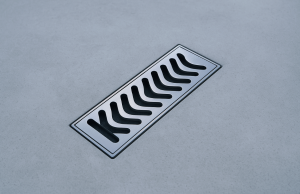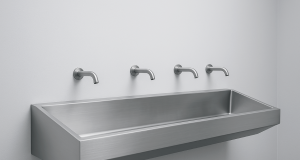Choosing the right air compressor for your business isn’t simply about finding something that produces compressed air—it’s about investing in equipment that delivers reliability, efficiency, and performance appropriate to your operational demands. While various compressor technologies exist, one type has increasingly become the industrial standard for continuous-duty applications: the rotary screw compressor.
These machines have transformed how businesses approach compressed air generation, offering advantages that piston compressors simply can’t match for many commercial and industrial applications. Their ability to run continuously without overheating, deliver consistent pressure, operate quietly, and maintain efficiency under demanding conditions makes them the preferred choice for manufacturers, workshops, and facilities requiring reliable compressed air throughout operating hours. Understanding what sets Screw Air Compressors apart from alternatives helps businesses make informed equipment investments that support productivity rather than hinder it.
How Rotary Screw Compressors Work
The fundamental difference between screw compressors and their piston counterparts lies in their compression mechanism—a difference that creates significant performance advantages.
The Twin-Rotor Design
Rotary screw compressors use two helical rotors (screws) that mesh together within a chamber. As these rotors turn, they trap air between their threads and the chamber walls, progressively compressing it as the air moves from the intake end toward the discharge port. This continuous rotary motion contrasts sharply with the reciprocating up-and-down action of piston compressors.
The result is smooth, pulse-free air delivery without the vibration and noise associated with piston designs. There’s no metal-on-metal contact between the rotors—they never actually touch, separated by precise clearances and oil films—which dramatically reduces wear and extends component life.
Oil-Injected vs Oil-Free Designs
Most industrial screw compressors use oil injection, where oil serves triple duty: sealing gaps between rotors, cooling the compression process, and lubricating bearings. This oil is separated from the compressed air before delivery, though trace amounts may remain—acceptable for most industrial applications but not for sensitive uses like food processing or pharmaceuticals.
Oil-free screw compressors use specialized coatings and external cooling to eliminate oil contact with compressed air entirely, producing ultra-clean air at the cost of higher initial investment and maintenance requirements.
Key Advantages Over Piston Compressors
For businesses evaluating compressor options, understanding why screw technology often justifies higher upfront costs reveals long-term value.
Continuous Duty Operation
Piston compressors follow duty cycles—they run until reaching target pressure, then shut off to cool, cycling on and off throughout the day. This intermittent operation works fine for shops with sporadic air demands but creates problems for facilities requiring constant air supply.
Rotary screw compressors run continuously without overheating, delivering steady airflow that matches production demands. This 100% duty cycle capability makes them essential for manufacturing lines, automated equipment, and any operation where air supply interruptions disrupt productivity.
Superior Energy Efficiency
While initial purchase prices favor piston compressors, operational costs tell a different story. Screw compressors typically achieve better energy efficiency, particularly with variable speed drive (VSD) models that adjust motor speed to match air demand precisely.
Since compressed air generation represents significant portions of industrial energy costs—often 10-40% of total electricity consumption—even modest efficiency improvements deliver substantial savings over equipment lifespans.
Reduced Maintenance Requirements
The absence of pistons, connecting rods, valves, and other reciprocating components means fewer parts subject to wear and replacement. Well-maintained screw compressors often operate 40,000-60,000 hours between major overhauls—compared to 2,000-4,000 hours for piston compressors under similar conditions.
This extended service life translates to lower maintenance costs and fewer production disruptions from compressor downtime.
Quieter Operation
The smooth rotary motion generates significantly less noise than reciprocating pistons. Many screw compressors operate at 60-70 decibels—comparable to normal conversation levels—while piston compressors often exceed 80-90 decibels, requiring hearing protection and sound enclosures.
This noise reduction matters for workplace comfort, regulatory compliance, and flexibility in equipment placement within facilities.
Sizing and Capacity Considerations
Selecting appropriate compressor capacity prevents both undersized equipment that can’t meet demands and oversized units that waste energy and money.
Understanding CFM Requirements
Compressed air demand is measured in cubic feet per minute (CFM) at specific pressure levels (typically 100-125 PSI for industrial applications). Calculate your facility’s total CFM needs by listing all pneumatic tools and equipment, noting their individual CFM requirements, and factoring in how many operate simultaneously.
Add 15-20% safety margin to accommodate future expansion and account for system inefficiencies. A facility requiring 80 CFM continuous demand should specify compressors rated for approximately 95-100 CFM.
Fixed Speed vs Variable Speed Drive
Traditional fixed-speed compressors run at constant RPM, using load/unload cycling to match varying air demands. This works but wastes energy during partial-load operation—which represents typical conditions for many facilities.
Variable speed drive (VSD) compressors adjust motor speed dynamically, matching air production precisely to consumption. VSD models cost 20-30% more initially but often deliver 15-35% energy savings, providing payback periods of 18-36 months for facilities with fluctuating air demands.
Maintenance Best Practices
Maximizing compressor lifespan and reliability requires consistent attention to basic maintenance tasks.
Regular Service Intervals
Daily tasks: Check for unusual noises, leaks, or warning indicators. Monitor operating temperatures and pressures.
Weekly checks: Inspect oil levels and condition. Clean intake filters if operating in dusty environments.
Monthly maintenance: Test safety shutdowns and pressure relief valves. Check for air system leaks using ultrasonic detectors.
Scheduled servicing: Change oil and filters according to manufacturer specifications—typically every 2,000-8,000 hours depending on operating conditions. Replace air/oil separators and examine drive systems for wear.
Air Quality Management
Compressed air often carries moisture, oil residue, and particulates that can damage pneumatic equipment and contaminate processes. Installing appropriate filtration and drying equipment protects downstream investments:
- Aftercoolers remove moisture by cooling compressed air
- Refrigerated dryers further reduce moisture content to -40°F pressure dew points
- Filters remove particulates and oil aerosols to specified purity levels
Investing in air treatment equipment extends pneumatic tool life and prevents product contamination—particularly critical for food processing, pharmaceuticals, and electronics manufacturing.
Making the Investment Decision
For businesses considering screw compressor investments, several factors influence whether timing and specifications align with operational needs.
When to Upgrade from Piston Compressors
Consider upgrading if your operation experiences:
- Frequent piston compressor repairs creating downtime
- Inconsistent air pressure affecting production quality
- Noise complaints from employees or neighbors
- High energy costs from inefficient equipment
- Plans to expand production requiring greater air capacity
New vs Refurbished Equipment
Budget-conscious businesses sometimes consider refurbished compressors. Quality rebuilds can deliver 70-80% of new equipment lifespan at 40-60% of purchase price—worthwhile for temporary needs or tight budgets.
However, new equipment offers latest efficiency technology, full warranties, and known service histories. For critical applications where reliability matters most, new equipment typically justifies its premium.
FAQ Section
How much do rotary screw compressors cost compared to piston compressors?
Rotary screw compressors typically cost 2-4 times more than equivalent-capacity piston compressors initially. A 25 HP piston compressor might cost £2,000-£4,000, while a comparable screw unit ranges £8,000-£15,000. However, lower operating costs, reduced maintenance, and longer lifespans often make screw compressors more economical over 10-15 year lifecycles for continuous-duty applications.
What size facility or air demand justifies a screw compressor?
Generally, operations requiring 15+ CFM continuous air supply or running compressors more than 4-5 hours daily benefit from screw technology. Smaller workshops with intermittent demands (a few hours daily) may find piston compressors adequate. Evaluate based on duty cycle rather than facility size alone—a small shop running equipment continuously justifies screw compressor investment.
How long do rotary screw compressors typically last?
With proper maintenance, quality rotary screw compressors operate 15-20 years before requiring major rebuilds. Many units exceed 100,000 operational hours—equivalent to running continuously for over 11 years. Piston compressors typically last 5-10 years under similar conditions, making screw compressors superior long-term investments despite higher initial costs.
Can screw compressors handle variable air demands efficiently?
Fixed-speed screw compressors handle varying demands through load/unload cycling but waste energy at partial loads. Variable Speed Drive (VSD) models excel at variable demands, adjusting motor speed precisely to match consumption—delivering 15-35% energy savings compared to fixed-speed units in typical industrial applications with fluctuating requirements.
What maintenance skills are required for screw compressors?
Basic maintenance—checking oil levels, changing filters, monitoring performance—requires only general mechanical competence. However, internal repairs and rebuilds demand specialized training and tools. Most facilities handle routine maintenance in-house while contracting specialized service providers for major overhauls, similar to approaches for other industrial equipment.
Conclusion
Rotary screw compressors represent significant investments, but their superior performance characteristics—continuous duty capability, energy efficiency, reliability, and low maintenance requirements—deliver compelling value for operations depending on consistent compressed air supply. While piston compressors remain appropriate for intermittent-use applications and budget-conscious scenarios, businesses with continuous or heavy air demands find that screw technology’s advantages justify premium pricing through reduced operating costs and increased productivity. By understanding how these machines work, evaluating capacity needs accurately, and committing to proper maintenance, businesses position themselves with compressed air systems that support rather than limit operational capabilities for decades to come.

